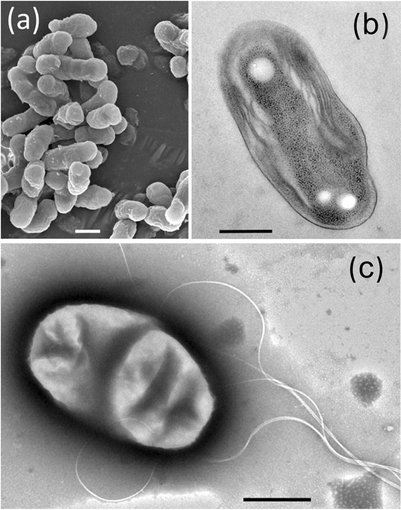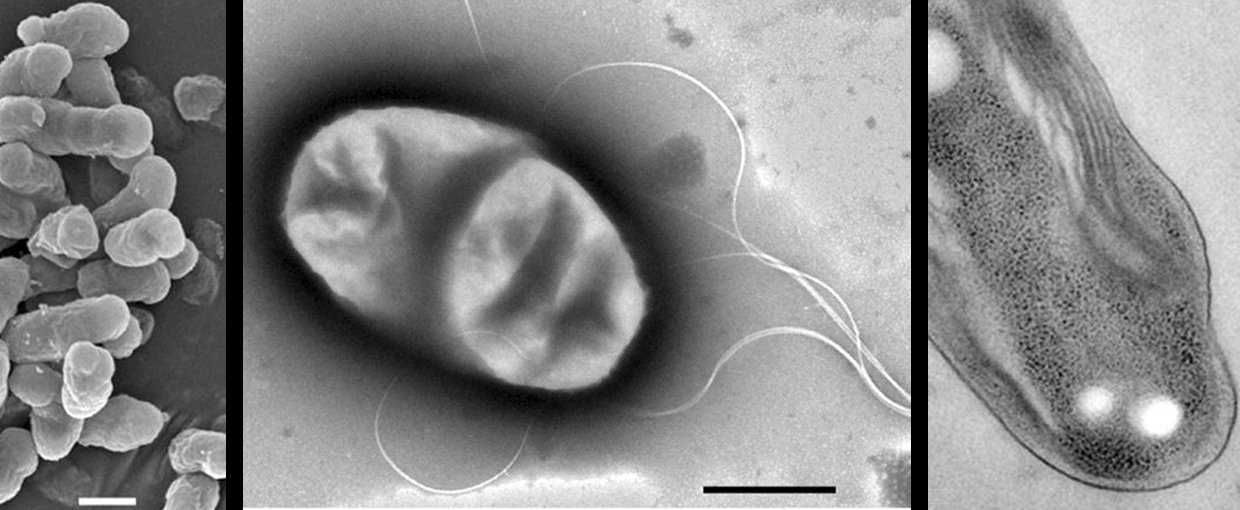
Astrobiologists studying thermophilic purple nonsulfur bacterium from hot springs in New Mexico have designated a new taxon for an organism previously designated as Rhodopseudomonas strain GI. This strain, isolated from a hot spring microbial mat community, grows best above 40 °C and to a maximum of 47 °C.
Strain GI has a budding morphology similar to species of the genus Blastochloris, but also has a number of features that make it distinct. Due to its unique properties, the authors suggest that strain GI represents a subclade within Blastochloris and should be classified as a new species of the genus Blastochloris.

Electron micrographs of cells of strain GI, a thermophilic purple nonsulfur bacterium isolated from a hot spring microbial mat in New Mexico.Image credit: Madigan et al. (2019).
The study, “Blastochloris tepida, sp. nov., a thermophilic species of the bacteriochlorophyll b-containing genus Blastochloris,” was published in Archives of Microbiology. The work was supported by the Nexus for Exoplanet System Science (NExSS). NExSS is a NASA research coordination network supported in part by the NASA Astrobiology Program. This program element is shared between NASA’s Planetary Science Division (PSD) and the Astrophysics Division.
